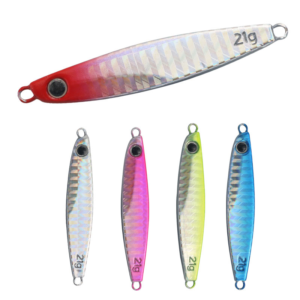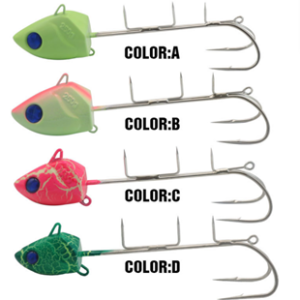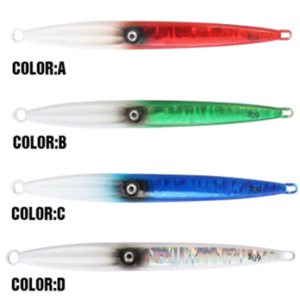Wholesale Metal Jig Lure for Saltwater Carp Fishing with Feather Treble Hook Jigger Bait
Extra informatie
| Kleur | optional |
|---|---|
| Material | Lead, metal |
| Weight | 20g,30g,40g |
| Model | TX-35 |
| Package | PVC Bag |
Product Details:
Everything You Need to Know About Sinking Metal Lead Jigs for Fishing
When it comes to fishing, selecting the right type of lure can be the difference between an empty catch and a full cooler. Among the many types of lures available, sinking metal lead jigs are a popular choice among anglers for their versatility and effectiveness in deep-water fishing. These jigs are designed to sink quickly, making them ideal for reaching fish at varying depths. In this article, we will explore the ins and outs of sinking metal lead jigs, from how they work to tips on how to use them for the best results.
1. What is a Sinking Metal Lead Jig?
A sinking metal lead jig is a type of artificial fishing lure made primarily from metal, often lead or other heavy alloys. These jigs are typically shaped like a small fish or a slender, elongated shape to mimic the natural prey of many fish species. Because of their dense construction, they sink quickly through the water column, making them ideal for targeting fish at greater depths. Sinking metal lead jigs are commonly used for deep-sea fishing, jigging from boats, or ice fishing.
2. How Do Sinking Metal Lead Jigs Work?
The primary appeal of sinking metal lead jigs lies in their ability to sink rapidly to the desired depth, a key feature when fishing in deeper waters. As the jig sinks, it moves erratically due to its design, imitating the action of a struggling baitfish. This unpredictable movement is what attracts predatory fish. Anglers often use a technique called “jigging,” where they lift and drop the rod to make the jig dart up and down, mimicking the motions of injured or fleeing prey. The jig’s shape and the weight distribution are crucial in generating the right movement.
3. Benefits of Using Sinking Metal Lead Jigs
Sinking metal lead jigs offer several advantages, making them a go-to option for many anglers. Some of the key benefits include:
- Veelzijdigheid: These jigs can be used in various fishing environments, including deep-sea, lake, and ice fishing.
- Speed: Their fast sink rate allows anglers to quickly reach deeper waters where many fish species dwell.
- Attractive Action: The erratic movement of sinking metal jigs makes them irresistible to predatory fish.
- Duurzaamheid: Metal jigs are built to last and withstand the harsh conditions of saltwater or ice fishing.
4. Choosing the Right Sinking Metal Lead Jig
Selecting the right jig is essential for successful fishing. Here are some factors to consider when choosing a sinking metal lead jig:
- Weight: The heavier the jig, the faster it will sink. Choose a weight based on the depth you want to reach and the species you’re targeting.
- Shape: Different shapes create different movements in the water. A wider, flatter jig will glide more, while a more streamlined shape will dart more erratically.
- Kleur: Color can make a big difference, especially in murky waters. Bright or reflective colors often catch the attention of fish.
- Size: The size of the jig should match the prey that fish in the area are feeding on.
5. Best Techniques for Using Sinking Metal Lead Jigs
Using a sinking metal lead jig effectively involves more than just letting it sink to the bottom. Here are some of the best techniques to maximize your success:
- Jiggen: The most common technique, where you lift the rod to create a sharp upward motion and then let the jig fall back down. Repeat this action to mimic the erratic movement of a distressed fish.
- Lift and Pause: Another effective method is to lift the jig and then pause, letting it sink again. This gives fish a chance to strike during the “dead” moments of the jig’s fall.
- Slow Retrieve: In some situations, slowly retrieving the jig after it sinks can help create a steady, swimming motion that can trigger strikes from fish hunting prey.
6. Common Mistakes to Avoid with Sinking Metal Lead Jigs
While sinking metal lead jigs are an effective tool, it’s easy to make a few mistakes that can reduce their effectiveness. Here are some common pitfalls to avoid:
- Using the wrong weight: If the jig is too light, it may not reach the desired depth. Too heavy, and it might sink too quickly, reducing the time the jig spends in the strike zone.
- Over-jerking: While movement is key, jerking the rod too forcefully can create unnatural or erratic jig movements that may spook fish.
- Not adjusting for depth: Always adjust your technique based on the depth of the water and the type of fish you’re targeting.
Sinking metal lead jigs are an essential tool for any angler targeting fish in deeper waters. Their quick sink rate, versatile design, and erratic movement make them highly effective at attracting a variety of fish species. By understanding how they work, choosing the right jig, and using the proper techniques, you can significantly increase your chances of a successful fishing trip. With the right approach, sinking metal lead jigs can help you reel in your next big catch!








